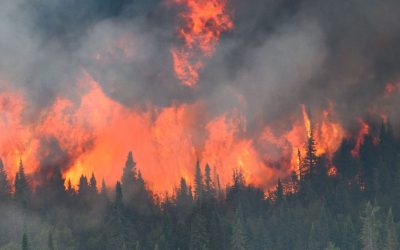Executive Summary
Canadians view the protection and preservation of the natural environment as one of the most important functions of their governments.
This paper provides an overview of the major developments in Canada’s environmental performance over the past several decades. We examine major indicators of environmental sustainability in a range of different areas including conventional air pollution, greenhouse gas (GHG) emissions and water pollution with the objective of identifying important trends and assessing whether Canada’s natural environment is generally becoming more or less healthy over time.
Our review shows that despite a considerable amount of rhetoric suggesting otherwise, Canadians have much to celebrate concerning this country’s natural environment. Over recent decades, Canada’s air has become cleaner, ecosystems and timberlands have been preserved and our agricultural soil has become better protected from erosion. When it comes to water quality, at least one important indicator suggests that Canada has remained a world leader. All this has occurred while Canada’s population and economy have grown strongly. While certain regions of the country continue to face significant local environmental challenges and nationally there is always more that can be done to improve the country’s environmental performance, the data presented in this report suggest that Canada’s natural environment is generally growing cleaner and greener.
Specifically, we examine Canada’s environmental performance in the following areas:
• Conventional air pollution. Ambient levels of sulphur dioxide have declined steadily in recent years. Ambient concentrations of this pollutant in Canada’s urban centres decreased by 57 per cent between 1996 and 2009. Ambient levels of nitrogen dioxide and volatile organic compounds (VOC) also decreased substantially in Canada’s towns and cities.
• Greenhouse gas emissions. Over the last 20 years, Canada’s total greenhouse gas emissions have increased, while some peer countries have achieved significant reductions. This is largely attributable to Canada’s strong population and economic growth during this period. In fact, there is significant evidence that economic activity in Canada has become less GHG-intensive in recent years. GHG emissions per capita declined by 5 per cent between 1990 and 2010. GHG emissions per unit of Gross Domestic Product (GDP) showed an even larger decrease, dropping by 27 per cent over the same period.
• Freshwater quality. According to environment Canada’s Freshwater Quality Indicator (WQI), 41 per cent of water quality measurement stations in Canada received ratings of excellent or good in the last reporting period compared with just 20 per cent that received a rating of marginal or poor. According to the internationally respected Environmental Performance Index (EPI), Canada is a world leader in terms of water quality. The EPI awarded just one country (Sweden) a better water quality rating than it did Canada.
• Soil quality. Canada’s agricultural soil is much better protected from erosion than it was three decades ago. Agriculture and Agri-Food Canada’s Soil Erosion Risk Indicator (SoilERI) provides a measure of the extent to which different parcels of cropland are at risk from erosion. In 1981, 47 per cent of cropland was at very low risk of erosion, which is the safest possible rating. By 2006, this number had grown to 80 per cent of Canada’s cropland. When examining specific types of erosion, we see that Canada’s soil is better protected from wind, water and tillage erosion (the three major types). In addition, Canada’s soil is healthier and more productive than it was decades ago.
• Forestry. Canada is a world leader in forest conservation. Its forest cover has been maintained over recent decades; there has been no reduction in overall forest cover. Canada is the leading international participant in a third-party certification system that uses rigorous standards to certify that forestland is managed sustainably. The share of Canada’s forest that has been certified by respected third parties has grown steadily over recent decades, and Canada has more certified sustainable forestland than any other country.
The Annual Allowable Cut (AAC) sets out a maximum percentage of wood that can be harvested sustainably each year. Both hardwood and softwood resources have consistently stayed below the AAC. Underlining this sustainable achievement is the fact that Canada’s 397.3 million hectares of forest have not decreased over recent decades. Third-party certification of forests has seen a large increase with Canada far exceeding the runner-up country in a global context. Where Canada has 151 million hectares of certified forest, the United States comes in second with 49 million hectares.
Some critics frequently excoriate Canada’s environmental record and imply that our country is becoming more polluted and less environmentally healthy. The evidence presented in this report refutes such claims. In fact, Canada’s natural environment is becoming cleaner and greener.
View entire study as PDF (26 Pages)


